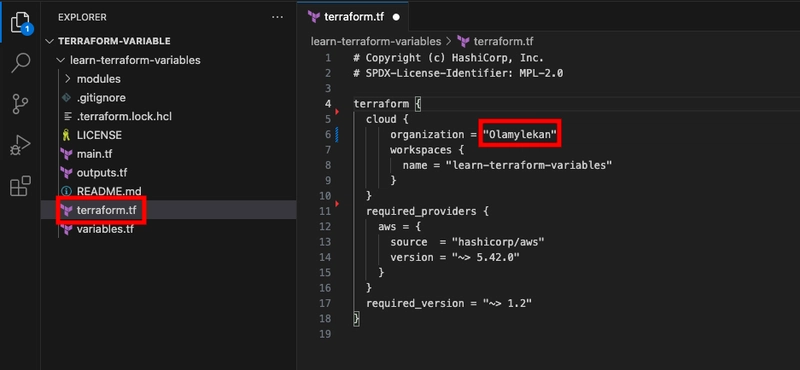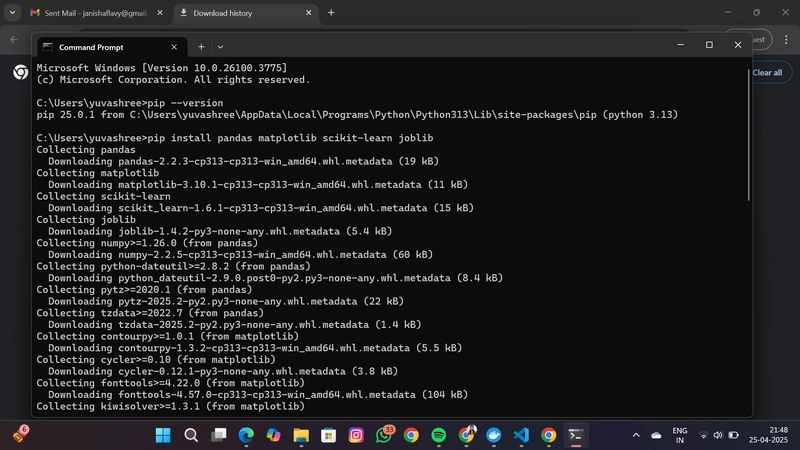Node.js vs Golang: Which One Should You Choose
Modern apps demand careful consideration of backend technologies from decision makers. In our experience as a Node.js development company, we've seen firsthand how crucial this decision can be for our clients. Initially, when helping a client scale their application to withstand massive user loads, we had intense internal debates about Go versus our familiar Node.js. Go offered compelling performance benefits, our deep understanding of Node.js development and its rich ecosystem had already delivered significant wins for them. This experience highlighted the essential need for CTOs to grasp the core strengths of each technology when making strategic choices. Go was developed to address the inefficiencies of existing languages in handling concurrent systems. Node.js was developed to address the limitations of traditional web servers in handling simultaneous connections. Go was born in 2007 at Google, while Node.js was also created by a Google engineer named Ryan Dahl. Both are popular among devs. In terms of popularity, Node.js is a winner. Over 6.3 million websites are built using Node.js, including prominent ones like Netflix, PayPal, LinkedIn, Uber, eBay, NASA, and Trello. It powers around 3.0% of known web servers. On the other hand, Go is gaining traction for its speed and efficiency, making it one of the world's popular programming languages in cloud computing. Go is a highly favorable language for parallel applications. It is used by prominent names like Uber, Dropbox, and Cloudflare. Before we turn to “vs” war, let’s briefly have an overview of Node.js and Golang first. What is Node.js? It is a JavaScript engine built on Chrome’s V8 JavaScript engine. It lets developers use JavaScript in the backend too. With features like non-blocking, event-driven models, Node.js is one of the popular tech stacks for building real-time backend applications (or services). While it provides features like ES modules, async I/0, and worker threads for parallel processing. Generally, Node.js is used for building APIs, real-time apps, and microservices. What is Golang? Go (or Golang), is an open-source language from Google. It is primarily used in cloud, server-side, and networking apps. It includes built-in concurrency, a library that makes microservices and cloud-native development smooth. Golang is an excellent choice for building lightweight apps. It can run without virtual machine and is lightweight, all these factors makes it a popular option for developers. Nodejs vs Golang Let’s take a look at Node.js vs Golang to understand which one is easier to learn, more scalable, and offers better performance. 1. Learning Curve Node.js is easy to learn (for beginners) since it is JavaScript-based (an omnipresent language with huge community support). Developers with frontend experience can quickly adapt. This is a big plus for JavaScript here. Go’s syntax is clean, and it is strictly typed. It requires one to know concurrency. And if you already have experience in languages like C++, Java, or Python, it is easy to learn. It may take a newbie some time to learn Go (especially those without a systems background). 2. Scalability Golang offers built-in concurrency using goroutines, making it highly efficient for scaling CPU-bound and concurrent workloads. It’s ideal for microservices and high-performance backends. Node.js scales well with I/O-heavy tasks using its event-driven model, but it may require extra effort and tools like clustering or workers for true horizontal scaling in compute-intensive apps. 3. Benchmarks Go generally performs better in raw benchmarks, especially in execution speed, memory usage, and concurrent request handling. Its compiled nature and lightweight threads offer a clear edge. Node.js performs decently for I/O-bound workloads but lags in CPU-heavy tasks. Real-world performance depends on use case, but Go tends to dominate in low-latency environments. 4. Performance Node.js is a great choice for I/O-bound operations and real-time apps. The reason is it has a non-blocking architecture to manage multiple connections simultaneously. However, for CPU-heavy apps, it is better not to use Node.js as it is single-threaded, thus, not efficient enough for those tasks. Go is compiled to machine code, giving it superior runtime performance and efficient memory management. It’s ideal for building fast, lightweight services. Node.js relies on the V8 engine and JIT compilation, making it fast for JavaScript, but it’s not as efficient as Go for CPU-bound operations or when low latency is critical. 5. Architecture Node.js uses a single-threaded, non-blocking event loop. This design is ideal for working with several I/O operations. Go, on the other hand, comes up with a multi-threaded model with lightweight goroutines and channels to provide enhanced concurrency and parallelism. Go's architecture is ideal for services demanding high throughput, whereas Node.js is usuall

Modern apps demand careful consideration of backend technologies from decision makers. In our experience as a Node.js development company, we've seen firsthand how crucial this decision can be for our clients.
Initially, when helping a client scale their application to withstand massive user loads, we had intense internal debates about Go versus our familiar Node.js. Go offered compelling performance benefits, our deep understanding of Node.js development and its rich ecosystem had already delivered significant wins for them.
This experience highlighted the essential need for CTOs to grasp the core strengths of each technology when making strategic choices.
Go was developed to address the inefficiencies of existing languages in handling concurrent systems. Node.js was developed to address the limitations of traditional web servers in handling simultaneous connections. Go was born in 2007 at Google, while Node.js was also created by a Google engineer named Ryan Dahl.
Both are popular among devs. In terms of popularity, Node.js is a winner. Over 6.3 million websites are built using Node.js, including prominent ones like Netflix, PayPal, LinkedIn, Uber, eBay, NASA, and Trello. It powers around 3.0% of known web servers.
On the other hand, Go is gaining traction for its speed and efficiency, making it one of the world's popular programming languages in cloud computing. Go is a highly favorable language for parallel applications. It is used by prominent names like Uber, Dropbox, and Cloudflare. Before we turn to “vs” war, let’s briefly have an overview of Node.js and Golang first.
What is Node.js?
It is a JavaScript engine built on Chrome’s V8 JavaScript engine. It lets developers use JavaScript in the backend too.
With features like non-blocking, event-driven models, Node.js is one of the popular tech stacks for building real-time backend applications (or services). While it provides features like ES modules, async I/0, and worker threads for parallel processing. Generally, Node.js is used for building APIs, real-time apps, and microservices.
What is Golang?
Go (or Golang), is an open-source language from Google. It is primarily used in cloud, server-side, and networking apps. It includes built-in concurrency, a library that makes microservices and cloud-native development smooth. Golang is an excellent choice for building lightweight apps. It can run without virtual machine and is lightweight, all these factors makes it a popular option for developers.
Nodejs vs Golang
Let’s take a look at Node.js vs Golang to understand which one is easier to learn, more scalable, and offers better performance.
1. Learning Curve
Node.js is easy to learn (for beginners) since it is JavaScript-based (an omnipresent language with huge community support). Developers with frontend experience can quickly adapt. This is a big plus for JavaScript here.
Go’s syntax is clean, and it is strictly typed. It requires one to know concurrency. And if you already have experience in languages like C++, Java, or Python, it is easy to learn. It may take a newbie some time to learn Go (especially those without a systems background).
2. Scalability
Golang offers built-in concurrency using goroutines, making it highly efficient for scaling CPU-bound and concurrent workloads. It’s ideal for microservices and high-performance backends. Node.js scales well with I/O-heavy tasks using its event-driven model, but it may require extra effort and tools like clustering or workers for true horizontal scaling in compute-intensive apps.
3. Benchmarks
Go generally performs better in raw benchmarks, especially in execution speed, memory usage, and concurrent request handling. Its compiled nature and lightweight threads offer a clear edge. Node.js performs decently for I/O-bound workloads but lags in CPU-heavy tasks. Real-world performance depends on use case, but Go tends to dominate in low-latency environments.
4. Performance
Node.js is a great choice for I/O-bound operations and real-time apps. The reason is it has a non-blocking architecture to manage multiple connections simultaneously. However, for CPU-heavy apps, it is better not to use Node.js as it is single-threaded, thus, not efficient enough for those tasks.
Go is compiled to machine code, giving it superior runtime performance and efficient memory management. It’s ideal for building fast, lightweight services. Node.js relies on the V8 engine and JIT compilation, making it fast for JavaScript, but it’s not as efficient as Go for CPU-bound operations or when low latency is critical.
5. Architecture
Node.js uses a single-threaded, non-blocking event loop. This design is ideal for working with several I/O operations. Go, on the other hand, comes up with a multi-threaded model with lightweight goroutines and channels to provide enhanced concurrency and parallelism. Go's architecture is ideal for services demanding high throughput, whereas Node.js is usually used for real-time applications and quick API creation.
6. Developer Productivity
With a wide ecosystem, Node.js has a wide array of libraries and frameworks that can be accessed via npm (Node Package Manager). With this wide range, development is made easy and faster application building. The wide and active community provides ongoing support and frequent updates.
Although Go's ecosystem is less vast than that of Node.js, it has been increasing continuously. The Go community focuses on simplicity and readability, leading to well-maintained libraries and tools. Go's standard library is comprehensive, and the design of the language leads to clean and maintainable code.
7. Error Handling
Node.js employs conventional try-catch blocks and error-first callbacks for error handling. Though this method is well known to most developers, it can in some cases cause less predictable error management, particularly in sophisticated applications.
Go adopts a different strategy by making explicit error checking mandatory after calling functions. This approach encourages better error visibility and management, which results in stronger and more dependable applications. Yet, it may lead to longer code.
8. Memory Management
Node.js is dependent on the garbage collector of the V8 JavaScript engine for memory management. While efficient, this mechanism may contribute to erratic memory consumption patterns, particularly when experiencing high load.
Go has an integrated garbage collector that is tailored for low-latency use. Its memory handling is more predictable, and as such, it is better for large-scale applications where performance predictability is key.
9. Concurrency and Parallelism
Node.js operates on a single-threaded event loop, utilizing asynchronous callbacks and promises to handle multiple tasks concurrently. While effective for I/O-bound operations, CPU-intensive tasks can block the event loop, potentially leading to performance bottlenecks.
Go employs goroutines—lightweight threads managed by the Go runtime—to achieve concurrency. Each goroutine requires only about 2 KB of memory, allowing Go to handle thousands of concurrent tasks efficiently. This model is particularly beneficial for applications requiring high concurrency and parallelism.
When to Choose Node.js
- Real-time applications like chat apps and online gaming
- Single-page applications (SPAs)
- API services and microservices
- Projects requiring rapid development and prototyping
Node.js Pros & Cons
1. Non-blocking I/O
Node.js doesn’t wait around for one task to finish before starting another. That’s a geat feature when you’re have to build programs with features like reading files, communicating to a database, or calling APIs.
2. JavaScript
If you already use JavaScript on the frontend, sticking with it for the backend makes life easier. You don’t have to learn a new language, and it’s nice using the same style and tools across your whole project. Less switching, more building.
3. Large Ecosystem
There’s a large number of ready-made tools and libraries you can use with Node.js. Most things you need, someone’s already built. You can add features or fix problems quickly without having to build everything from scratch, which saves a lot of time.
4. Good for Real-time Applications
If you’re making something like a chat app or a live game, Node.js is great. It can handle lots of small updates happening quickly, like sending messages or moving players.
5. Single-threaded
Node.js runs on a single thread, which keeps things simple, but it also means it struggles with heavy tasks. If you’re doing something that takes a lot of computer power, like video processing, Node might slow down or freeze for a bit.
6. Callback Hell
In older Node.js code, you’ll often see functions inside other functions again and again—it gets messy real fast. It’s hard to read and fix. Newer ways like async/await make it cleaner, but old projects can still be a pain to work on.
7. Not Ideal for CPU-intensive Tasks
If your app needs to do big calculations or handle a lot of heavy data work, Node.js might not be the best pick. It’s not built for that kind of load, and there are other tools out there that handle it much better.
When to Choose Golang
- High-performance applications requiring efficient concurrency
- Microservices architecture
- Cloud-native applications
- Systems programming and network servers
Go (Golang) Pros and Cons
1. Performance
Go is super fast because it’s compiled. That means the code is turned into machine language before it runs, so it performs better, especially for tasks that hit the CPU hard. If speed really matters, Go has the edge over Node.js.
2. Concurrency
Go handles lots of tasks at once without much trouble. Its goroutines are super lightweight, so you can run thousands of them without crashing things. It’s a big help if you’re building something like a server that deals with tons of users at the same time.
3. Simple Syntax
Go’s code is pretty clean and easy to read. There’s not a lot of fluff, and it keeps things straightforward. Even if you’re new to it, you can usually follow what’s going on without having to look up stuff every two minutes.
4. Strong Standard Library
Go comes with solid tools built in, especially for things like handling servers, files, and network connections. You don’t need to rely on third-party packages for a lot of the basic stuff—it’s already there and works really well.
5. Lacks Libraries
Go’s built-in tools are great, but when you need something more specific—like a tool for payments, image editing, or real-time features—you might not find as many ready-to-go options as you would with Node.js. Sometimes you’ll end up building things yourself.
6. Verbose
Because Go avoids too much “magic” in the background, you often have to write more lines to get something done. It’s clear and safe, but when projects grow big, the code can feel a bit longer than you'd expect.
7. Learning Curve
The basics of Go are simple, but concurrency takes a bit to get used to. Goroutines and channels sound easy, but once you start using them in real-world apps, they can be tricky. It takes time to really get the hang of it.
The Key Differences Node.js and Go
If you are a CTO or a development agency, then this section is for you.
*1. Developers availability *
Node.js leverages a large JavaScript talent pool, speeding up recruiting and onboarding. Go’s community is smaller but growing; hiring may take longer and require more specialized screening.
2. Cost
Compiled Go binaries usually consume less CPU and memory, leading to lower hosting bills and simpler autoscaling. Node.js’s single‑threaded model can require additional instances or clustering to handle peak loads, driving up costs.
3. Performance
Go’s goroutines and scheduler deliver consistent concurrency under high load with minimal tuning. Node.js demands extra orchestration (worker threads or external queueing) to match that throughput, adding operational complexity.
4. Ecosystem
Node.js enjoys a vast npm registry and rapid release cycle, but frequent updates can introduce breaking changes and dependency bloat. Go’s stable standard library and predictable six‑month release cadence reduce dependency risk and long‑term maintenance overhead.
5. Security
Go’s static binaries simplify vulnerability scanning and supply‑chain audits. Node.js projects must manage a larger surface area of third‑party modules, requiring rigorous dependency monitoring and patch management.
Golang vs. Node.js: The Winner
Both Node.js and Golang are solid picks for backend development in 2025. Node.js has a mature ecosystem and works great when you need to build fast, especially for real-time apps like chats or live dashboards. A good Node.js development company can help you move quickly without sacrificing quality, thanks to the large pool of libraries and community support.
Go, on the other hand, brings serious performance and handles concurrency like a pro, which makes it a strong choice for systems that need to handle a lot of requests at once, like APIs or microservices at scale.
At the end of the day, it really comes down to what your project needs, your team’s experience, and where you want to take it. Both have their strengths. It’s all about picking the right fit.
If you're leaning towards Node.js but unsure how to get started or scale efficiently, working with a Node.js development company can make things smoother. They bring the experience, tools, and structure to help you build reliable, real-time applications without slowing down your roadmap.










































































































































































![[The AI Show Episode 144]: ChatGPT’s New Memory, Shopify CEO’s Leaked “AI First” Memo, Google Cloud Next Releases, o3 and o4-mini Coming Soon & Llama 4’s Rocky Launch](https://www.marketingaiinstitute.com/hubfs/ep%20144%20cover.png)



















































































































































































.jpg?width=1920&height=1920&fit=bounds&quality=70&format=jpg&auto=webp#)






















































































_Olekcii_Mach_Alamy.jpg?width=1280&auto=webp&quality=80&disable=upscale#)


















































































































![Most iPhones Sold in the U.S. Will Be Made in India by 2026 [Report]](https://www.iclarified.com/images/news/97130/97130/97130-640.jpg)
![Apple to Shift Robotics Unit From AI Division to Hardware Engineering [Report]](https://www.iclarified.com/images/news/97128/97128/97128-640.jpg)
































































































































